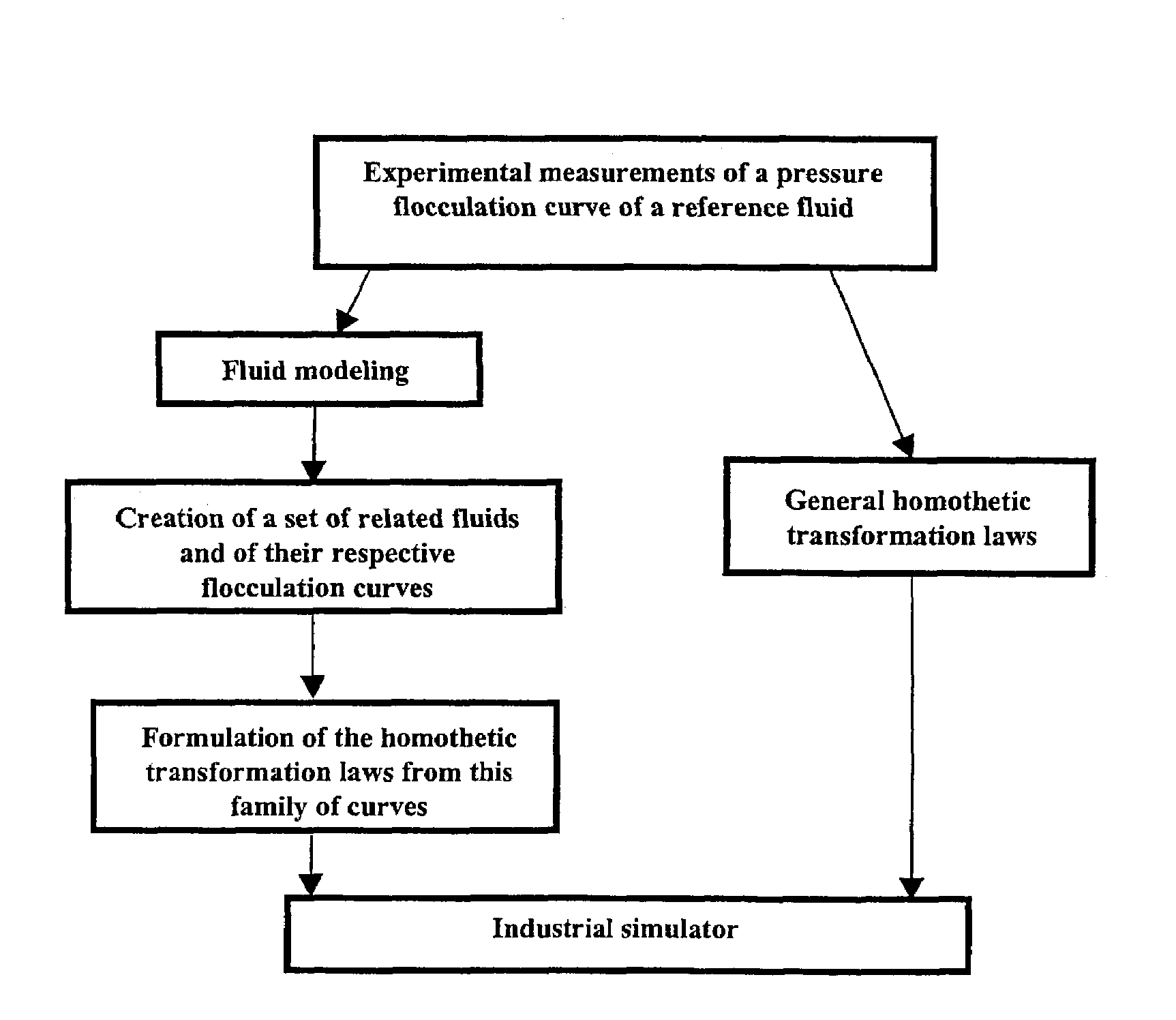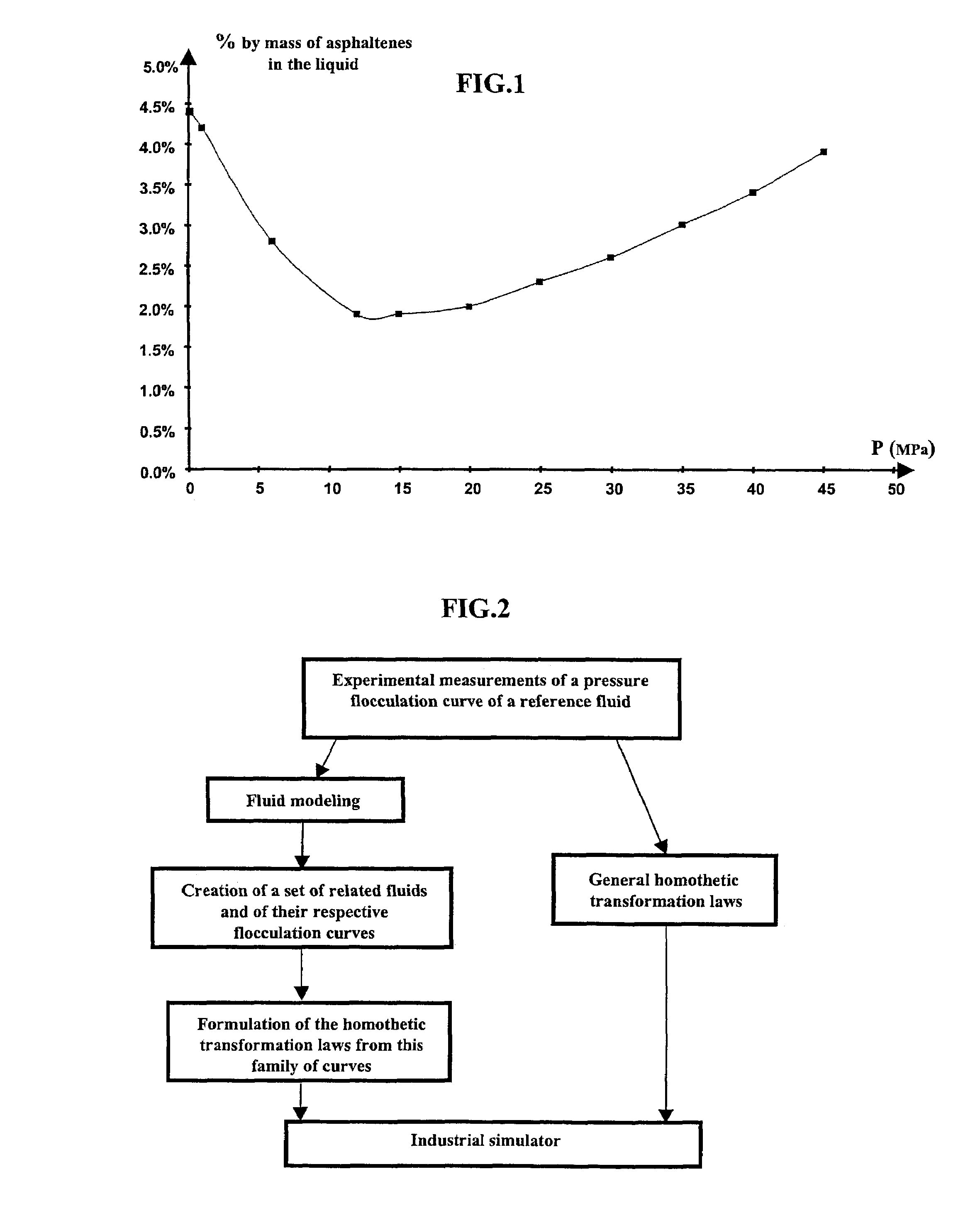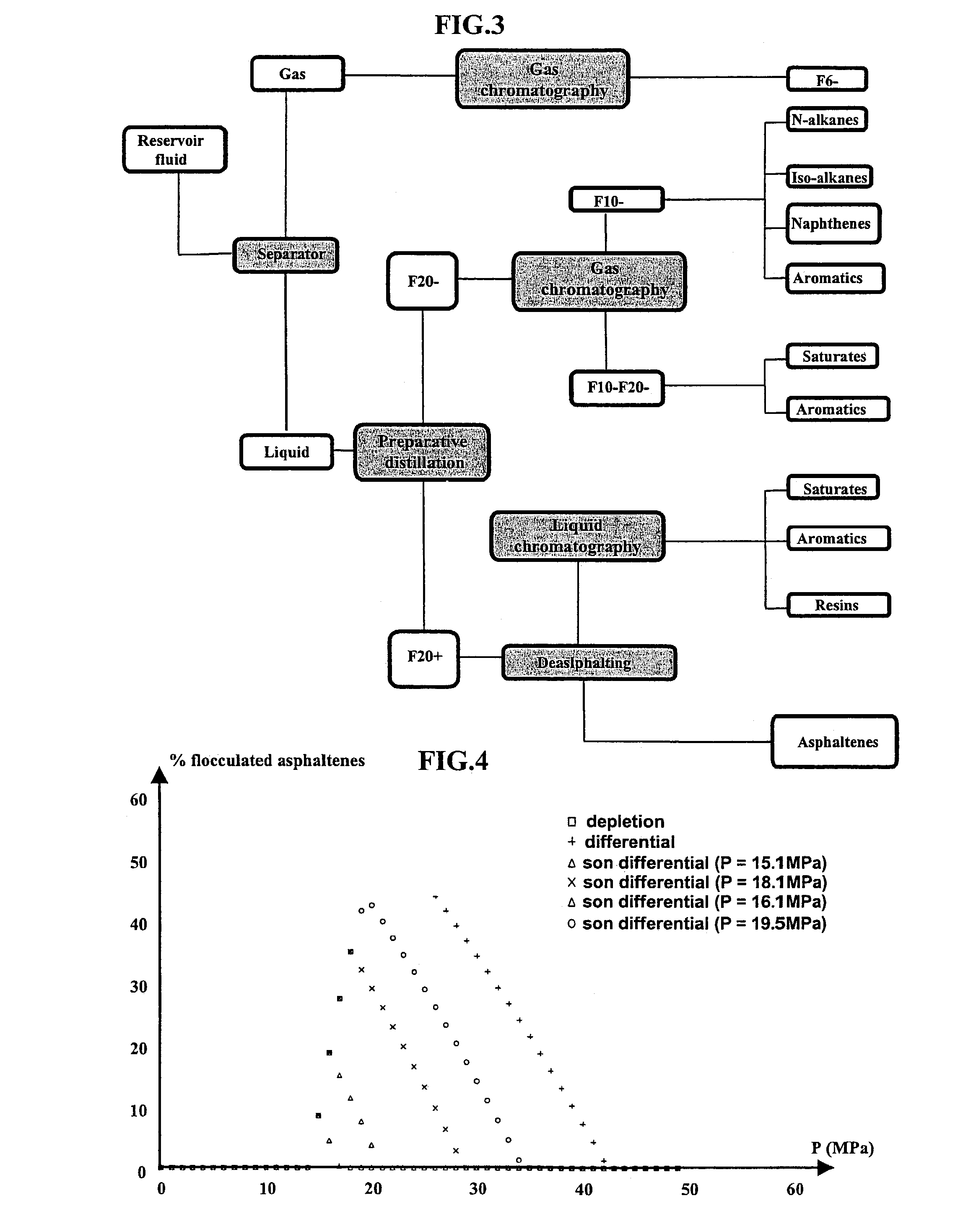Method for modeling asphaltenes flocculation conditions in hydrocarbon-containing fluids related to a reference fluid
a hydrocarbon-containing fluid and flocculation condition technology, applied in the field of hydrocarbon-containing fluid flocculation condition modelling of asphaltene, can solve the problems of clogging of pores, no means of predicting the flocculation phenomenon, and closing of wells, so as to save long and tedious studies
- Summary
- Abstract
- Description
- Claims
- Application Information
AI Technical Summary
Benefits of technology
Problems solved by technology
Method used
Image
Examples
Embodiment Construction
[0039]A flowchart of the method according to the invention is shown in FIG. 2. An experimental study of the reference fluid is carried out first. This fluid can be a reservoir fluid, a heavy residue or any other hydrocarbons mixture likely to induce flocculation of the asphaltenes under pressure. In addition to the conventional PVT study, it is necessary to obtain pressure flocculation data, i.e. to measure the amount of asphaltenes deposits according to the pressure. This study can for example be carried out by pressure filtration of the reservoir fluid. Homothetic transformation laws are then applied to model the asphaltenic behaviour of related fluids (also called son fluid in the description) resulting from expansion of the reference fluid (or parent fluid). These laws can be obtained in two different ways as described hereafter.
[0040]1) Homothetic Transformation Laws Using a Compositional Model
[0041]From experimental data obtained on this reference fluid, it is possible to mode...
PUM
 Login to View More
Login to View More Abstract
Description
Claims
Application Information
 Login to View More
Login to View More - R&D
- Intellectual Property
- Life Sciences
- Materials
- Tech Scout
- Unparalleled Data Quality
- Higher Quality Content
- 60% Fewer Hallucinations
Browse by: Latest US Patents, China's latest patents, Technical Efficacy Thesaurus, Application Domain, Technology Topic, Popular Technical Reports.
© 2025 PatSnap. All rights reserved.Legal|Privacy policy|Modern Slavery Act Transparency Statement|Sitemap|About US| Contact US: help@patsnap.com



